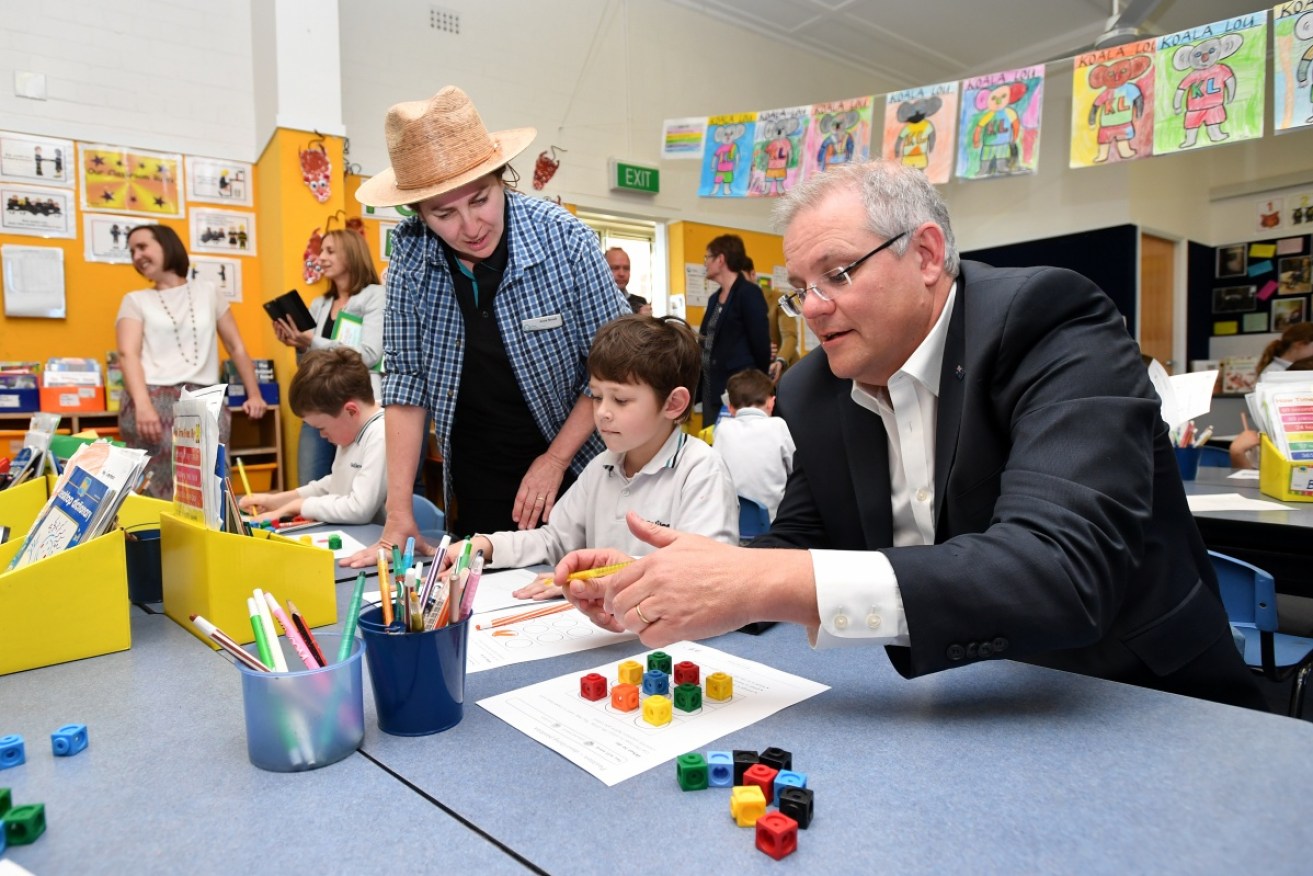The federal government’s new schools funding package explained


Government has pledged billions to the private school sector. Photo: AAP
The federal government’s promise to pump more than $4 billion into private schools has prompted a backlash from both outside and within the Liberal Party, and poses questions about the ways our schools are funded.
The plan, unveiled last Thursday, will see private schools (and in particular Catholic schools) receive $3.2 billion over the next 10 years, as well as a $1.2 billion fund aimed at keeping fees down.
The National Catholic Education Commission, the lobby group representing Catholic schools around the country, enthusiastically endorsed the deal that it said would prevent “hundreds of primary schools” having to double or even triple their fees.
New South Wales education minister Rob Stokes, of the Liberal Party, however, was less enthusiastic, saying he’s happy to see additional funding but hopes government schools will soon be the recipient of a similar deal as well.
So how are our schools funded, and why do Catholic schools need a top-up?
A matter of needs
Non-government schools have been the recipients of government funding since the 1960s, after a deal was struck to ensure every school in the country received some level of funding.
The level of funding received however is based on what parents of each school’s students could afford to contribute, a concept that was “solidified” in 2011 when the first Gonski review of Australia’s education system made its recommendations.
The Labor government at the time implemented this needs-based approach by ranking schools according to a socio-economic status (SES) score based on how wealthy parents were likely to be according to where they lived – a system Dr Peter Goss of independent think tank the Grattan Institute called “pretty weird”.
Catholic schools argued they were disadvantaged by this because they would be treated equally under this arrangement to wealthier private schools, while catering to families that were not as well off.
This was a valid complaint, and in response the government agreed to assign funding to Catholic schools not on their individual SES scores but rather the average SES score for Catholic schools in that state. That meant the wealthier ones would be treated the same as poorer ones, and receive a larger amount of funding.
That system was scrapped last year though, prompting Catholic schools to start lobbying for a better deal and warning that fees would have to increase to make up the difference, bringing us now to the government’s latest deal.
How the deal stacks up
The controversy this latest deal has spurred has been immense, but has it been justified? In the case of the $3.2 billion in funding over the next decade, perhaps not.
Mr Morrison’s announcement of the new funding deal coincided with government’s decision to change the way they assess parents’ income, meaning that from 2020 the amount of funding a school receives will be based on the personal income tax of parents, not the neighbourhood they live in.
What it also means is that many schools will have to endure changes in the amount of funding they get, and that’s where the $3.2 billion comes in, to help plug any holes that might spring up during the transition.
It might be a bit more than necessary, Mr Goss said, but it will help move the country in the right direction.
The bigger concern according to Mr Goss is actually the $1.2 billion affordability fund.
If affordability is defined by how much a person earns, then the ratio between how much someone earns and how much they can afford should remain the same regardless of how much someone earns, Mr Goss said.
That’s true of independent school fees based on parental income, but not of Catholic school fees, which actually account for a lower portion of parents’ overall income the wealthier those parents are.
Based off Mr Goss’ numbers, the wealthiest parents of Catholic school students should be paying almost double what they currently are to keep in line with the income-to-fee ratio that the least wealthy parents are paying.
A doubling of fees might drive parents to send their children elsewhere, but that is “a matter of choice and value, not affordability”, Mr Goss said.
What that means is still up for debate though, and Mr Stokes has already called for government to better explain the deal and what comes after it.
“I stand shoulder to shoulder with Catholic and Independent schools in advocating for equitable funding for all sectors. Given that the federal government has reiterated its commitment to needs-based, sector-blind funding, I hope that this announcement will be followed by equivalent additional funding for government schools,” he said.
“This is about working hard to get the best possible outcome for all students and all schools in NSW. I will continue my negotiations with the federal government to strike a funding solution that maximises funding for all NSW students, across all Catholic, independent and public schools.”








